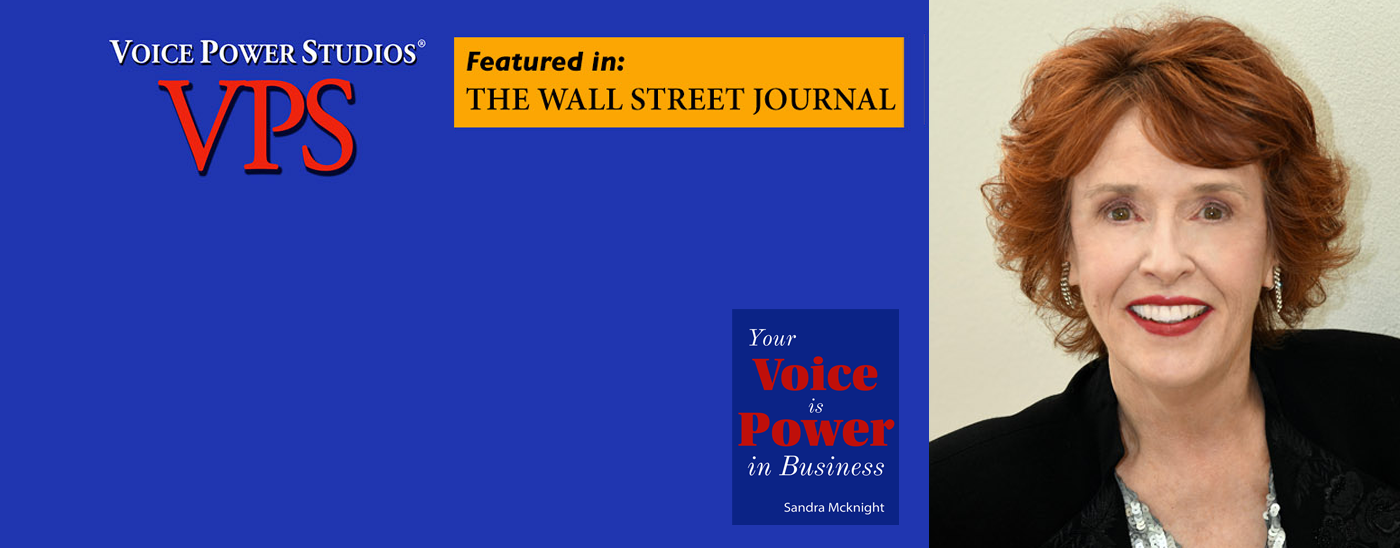
Thursday, February 2, 1989 Page V1
Changing Your Voice Can Make You a Winner, Say the Experts
|
By KATHLEEN DOHENY
|
tape for home use (Voice Advantage, 170 Sotoyome, Suite 2, Santa Rosa, Calif. 95405). Nasal speakers often don't open their jaws wide enough, adds Glass. Move the voice forward, suggests Cooper. "Practice saying 'right' or 'really.'" Nonauthoritative. Voices without authority often lack projection and inflection, experts say. To enhance projection, Glass advises bearing down and out with abdominal muscles and adding inflection. Emphasize adjectives, she adds. "Avoid ending strong statements with upward inflection." Ross says, noting "Speaking with vocal question marks is a common mistake made by women." Too fast or too slow. "Fast talkers convey the image of being nervous." says Ross, who thinks a too-slow rate is no better. "Slow talkers look and sound a little dull. They're perceived as having no energy, no initiative." For some, the real problem may be fluency breaks due to incorrect breathing, says Anett Grant of Executive Speaking in Minneapolis, a voice coach who combines movement exercises with voice training. Slowing body movement will slow speech, she reasons, though one speech pathologist dismissed the idea. In one such exercise, Grant tells clients to wave a scarf slowly in front of them as they talk. "Make a smooth, slow movement," she advises, "and let your voice follow that movement." Glass tells fast-talkers to practice taking in a breath and holding it. While exhaling, say. "Hello, how are you?," drawing out each vowel for about two seconds. Stammering or staccato. "The more staccato you sound, the more you'll be distrusted and the more people will be anxious with you," Grant believes. It's an understandable reaction she says, asking rhetorically, "Which would you rather listen to, an orchestra or a jackhammer?" The same scarf exercise that slows fast-talkers can smooth out "jackhammer" talkers, claims Grant, who also tells clients to think of phrases - not words - as the basic units of speech. Ideal. The best voices share several characteristics, Glass believes. "They exude warmth and enthusiasm and have a lot of inflection." Voice improvement doesn't mean taking on someone else's voice, Ross says, noting "I don't change my client's voices. I change the way they use their voices." Nor is voice improvement only a matter of mastering mechanical exercises and correct breathing. Voice problems are often tied in with voice image, Cooper says, which in turn reflects self-image and self-esteem. "A lot of women |
have trouble changing their voices because they won't accept maturity," Grant maintains. Adjusting to New Sound Changing the voice can be done in a single session with a speech expert, Cooper claims. But changing the image itself may take much longer. Even those with a healthy voice image may need to adjust to a new sound, Cooper finds. Often, they think they're speaking too loudly or too forcefully, assurances to the contrary. 'Chemistry' a Factor The number of sessions will depend on the problem. But "it also depends on the talent of the the therapist, the motivation of the client and the chemistry between the two people," says Glass, who generally advises clients to anticipate weekly sessions of four to six months. MORTON COOPER. Ph.D.
IRWIN ZUCKER, PR.
|
| THE VOICE | THE PROBLEM | THE ADVICE |
| Nasal | Too much air passes through the nose, making speaker sound whiny and immature. | Open jaw wider. Practice moving the voice forward by saying "right" or "really". |
| Non-authoritative | Speaker seems unsure because of lack of projection, inflection. Rising intonations at end of sentences make strong statements sound like questions. | Project more by bearing down and out with abdominal muscles. Increase inflection. Don't end strong statements with "vocal question marks." |
| Too High or Low | Unnatural pitch. High voices sound too emotional; low too boring. Both can damage vocal cords. | To find proper pitch, stand, put finger under breastbone. Press gently with staccato movement and say "umm-hmm" with lips closed. |
| Too Fast | Fast talkers seem nervous, and uncertain, sometimes conveying a sense of indifference. | Practice taking in a breath and holding it. While exhaling, say "Hello, how are you?" Draw out each vowel for about two seconds. |
| Sources: Morton Cooper, Lillian Glass, Anett Grant, Deborah Ross |























